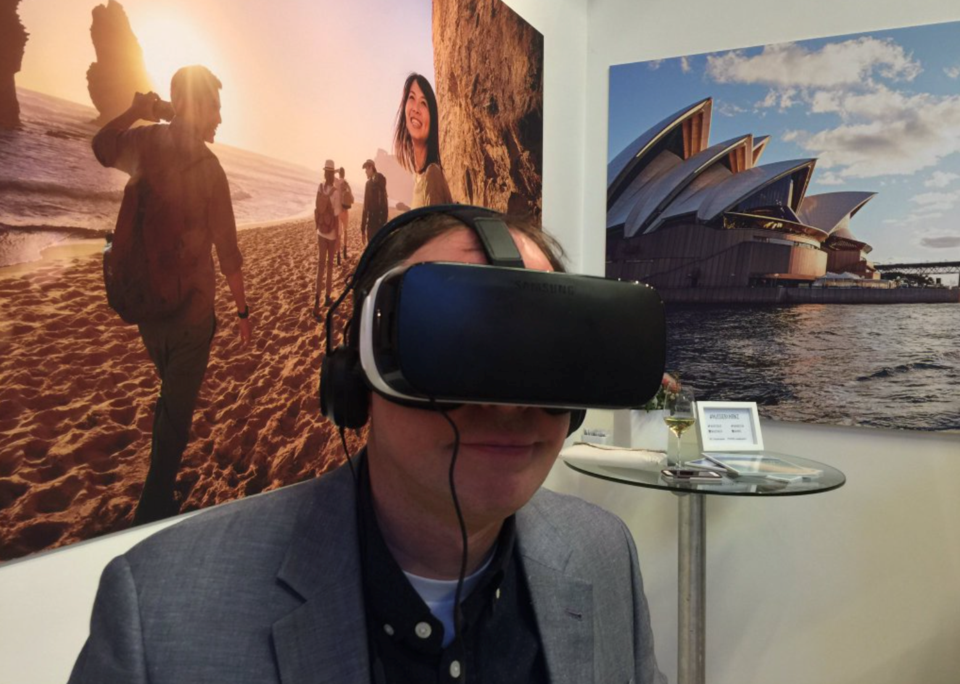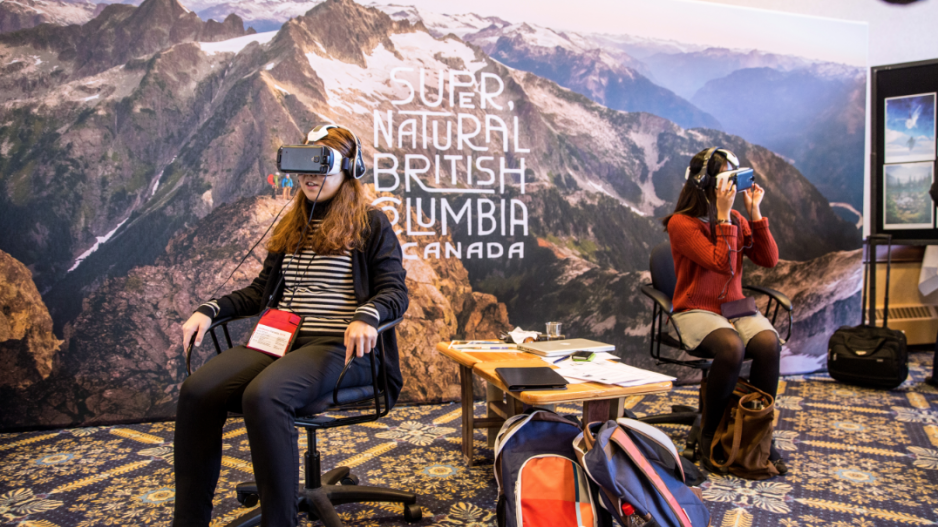Hundreds of sea lions sit on rocks as the boat approaches.
“You hear that growling?” the tour guide asks.
“That’s how you know they’re Steller’s sea lions because if they were California sea lions, they would be barking.”
Tourists look at the animals and swivel to look behind them or up to the sky as the growling gets louder.
The visitors are not in a boat along B.C.’s north coast, even though they feel as if they were. They could be in their living room. They are watching a virtual reality video that Destination British Columbia spent $550,000 to create in 2014.
The tourism marketing organization plans to spend another $100,000 in April to shoot a virtual reality ski video at Whistler Blackcomb. The production cost has fallen because the cost of equipment has dropped and it’s cheaper to transport crews to Whistler than to the Great Bear Rainforest.
Destination BC was the first tourism marketing organization in North America to invest in a virtual reality video to market a region. It was mid-2014, just a few months after Facebook (Nasdaq:FB) invested US$2 billion to buy upstart virtual reality device maker Oculus VR.
“When Facebook spends US$2 billion on something, you have to believe it has merit,” said Destination BC CEO Marsha Walden. “And when you’re doing something in marketing, being first out of the gate is often where you have the best opportunity to engage people.”
Overseas, however, some tourism marketing organizations are farther ahead at creating “virtual reality experiences.”
Tourism Australia partnered with Air New Zealand to open a pop-up gallery in Vancouver March 17-20 and encouraged visitors to view 17 virtual reality experiences on seven headsets.
The promotion offered visitors a chance of winning a trip to Australia. It drew a capacity crowd of more than 500 people, said Tourism Australia’s marketing manager for the Americas, Kristen Malaby.
Destination BC has so far shown its video, which offers viewers the option partway through to either go on a hike or see the sea lions, at trade shows.
The video is available on YouTube, where computer viewers move their cursor to scroll around panoramic sightlines. YouTube app users can simply move their phone and the image aligns with the direction in which the phone is pointing.

(Image: Tourism Australia and Air New Zealand hosted a pop-up virtual-reality gallery in Vancouver last month)
Tourism Vancouver has even given some top travel agents in the U.K. and Germany Samsung virtual reality headsets so they can show potential clients what B.C. is like.
“When someone is sending you 50,000 visitors a year, we think it is a good investment to give them headsets,” said Walden, who estimated the cost of the headsets at a few hundred dollars each.
Tourism Vancouver CEO Ty Speer is interested in creating virtual reality experiences but said the current production cost is too steep.
“It’s not a budget issue; it’s more of a value issue,” Speer said. “If I were to spend $500,000 to do a virtual reality piece, my obligation is to ask, ‘What else could I get for $500,000?’”
There is also the question of whether high-definition virtual reality videos could be counter-productive because viewers might be satisfied with a virtual experience and have less desire to be on vacation.
“I don’t see any risk of that,” said Rod Harris, who is an adjunct professor at Royal Roads University’s School of Tourism and Hospitality Management and a former CEO of Destination BC’s predecessor, Tourism BC.
“People want to meet other people, see how they live, experience their cultures and enjoy their restaurants and museums. While a virtual reality experience can be exciting, it is not a complete substitute for the real thing.” •




